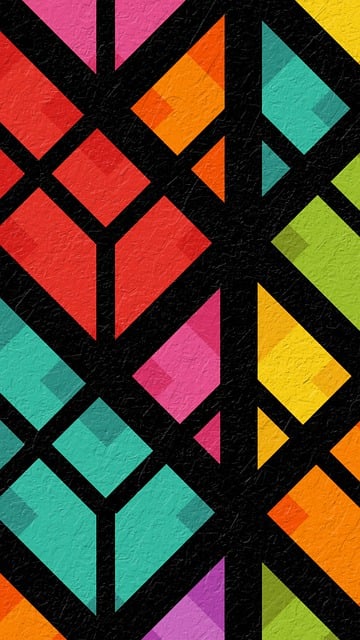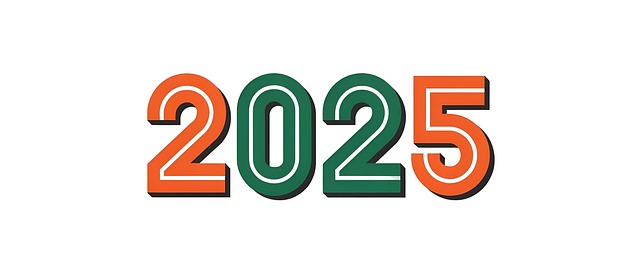Graphic Design, a dynamic field merging art and science, shapes our visual world across print and digital mediums. From historic book illustrations to modern websites, it captivates audiences and communicates brand identity. Experts blend composition, typography, color, and imagery with client needs and audience insights to create aesthetically pleasing, functional designs. While the digital revolution democratized creation, designers leverage tools like Adobe Creative Suite for precise control over vector illusions and typography. Mastering design principles ensures visually stunning content engaging audiences across platforms. Both print and digital mediums offer unique advantages, with successful campaigns showcasing graphic design's role in brand recognition and conversions. The future holds AI advancements, sustainable practices, and innovative presentation methods for this ever-evolving field.
In the dynamic realm of graphic design, the fusion of traditional print and digital mediums has created a captivating evolution. This comprehensive guide explores the multifaceted world of Graphic Design, tracing its roots from the art of print to its digital transformation. From understanding fundamental design principles to mastering cutting-edge tools, we delve into the creative process behind visually stunning content. Discover the interplay between print and digital formats, analyze successful campaigns, and gain insights into emerging trends shaping the future of graphic design.
Understanding Graphic Design: A Comprehensive Overview

Graphic Design, a multifaceted discipline, involves the art and practice of visual communication through various media. It encompasses not just what we see but also how our brains interpret those visuals, creating a powerful means to convey messages, evoke emotions, and shape perceptions. From logos and brochures to websites and social media posts, graphic design touches virtually every aspect of modern life.
At its core, Graphic Design requires a deep understanding of composition, typography, color theory, and imagery. Professionals in this field must be adept at translating client visions into visually compelling and effective designs, often balancing aesthetic appeal with functional requirements. This involves careful consideration of target audiences, brand identity, and cultural contexts to ensure the design resonates and achieves its intended purpose.
Traditional Roots: The Art of Print Graphic Design

Print graphic design, with its deep roots in traditional art forms, has been a fundamental aspect of communication for centuries. Long before digital tools became prevalent, designers meticulously crafted layouts using physical mediums like pens, brushes, and inks. This hands-on approach fostered a keen eye for detail, an understanding of color theory, and a mastery of composition—all essential skills that still hold value in today’s digital landscape. The art of print design involves transforming concepts into tangible, tactile forms, allowing viewers to engage with the work on a more immersive level.
From ornate book illustrations to meticulously designed posters and advertisements, the history of print graphic design is a vibrant tapestry woven with intricate patterns and vivid colors. These traditional techniques have laid the foundation for modern Graphic Design practices, influencing the aesthetics and principles that designers continue to explore and evolve in their digital creations.
Digital Evolution: Transforming the Design Landscape

The digital revolution has undeniably transformed the landscape of graphic design, marking a significant shift from traditional print media. This evolution has empowered designers with unprecedented tools and platforms to create, experiment, and reach global audiences. The advent of sophisticated software, such as Adobe Creative Suite, has democratized design processes, allowing professionals and enthusiasts alike to craft visually stunning content.
Digital Graphic Design offers unparalleled flexibility, enabling dynamic visualizations and interactions that were once unimaginable in print. Designers can now explore diverse mediums, from captivating websites and mobile applications to virtual reality experiences. This versatility has not only expanded creative possibilities but also demanded a constant reevaluation of design principles to adapt to the ever-changing digital realm.
Tools and Software: Mastering the Digital Canvas

In the realm of modern graphic design, the digital canvas has become an indispensable tool for creators. A wide array of software and tools empowers designers to bring their creative visions to life, from concept to completion. Whether it’s Adobe Creative Suite, with its powerful Photoshop and Illustrator programs, or emerging alternatives like Affinity Designer and Figma, these digital platforms offer an extensive palette of options.
Designers can master these tools to achieve precise control over every element on the screen, from vector illustrations to complex photo manipulations. With customizable palettes, advanced typography tools, and seamless collaboration features, digital design software has revolutionized the way Graphic Design is practiced, opening up endless possibilities for innovation and creativity.
Design Principles: Creating Visually Appealing Content

In the realm of graphic design, understanding fundamental design principles is paramount for creating visually appealing content that captivates audiences. Balance, for instance, plays a crucial role in aligning elements to foster harmony and prevent visual chaos. Contrast, on the other hand, adds depth by differentiating colors, textures, or sizes, thereby directing viewers’ attention to key components of a design.
Proximity is another essential principle that groups related elements together to enhance readability and comprehension. Alignment ensures designs feel structured and intentional, while repetition reinforces visual themes across various elements, creating a cohesive and memorable aesthetic experience. These principles form the backbone of effective graphic design, enabling designers to communicate messages with clarity, subtlety, and impact in both print and digital mediums.
Print vs. Digital: Which Medium Reigns Supreme?

In the realm of graphic design, the age-old debate between print and digital mediums continues to spark discussions among professionals. Both have their unique advantages and find application in different contexts, but which one reigns supreme? The answer lies in understanding the inherent qualities of each medium and how they cater to specific goals.
Print graphic design offers a tangible experience with crisp visuals, vibrant colors, and intricate details that can be appreciated up close. It is ideal for high-quality publications, branding materials, and art prints where texture and depth play a significant role. On the other hand, digital graphic design provides versatility, interactivity, and reach. It allows designers to create dynamic content for websites, social media, and digital advertising campaigns that can engage audiences globally with real-time updates. The choice between print and digital ultimately depends on the project requirements, target audience, and the desired impact in the ever-evolving landscape of graphic design.
Case Studies: Successful Print and Digital Campaigns

Successful print and digital campaigns showcase the versatility and impact of graphic design in achieving specific business goals. Case studies reveal that effective visual communication can enhance brand recognition, drive engagement, and increase conversions. For instance, a study on a recent e-commerce campaign highlights how bold, minimalist graphics on a landing page led to a 20% lift in sales compared to competitors’ sites with cluttered designs.
Another compelling example is a rebranding initiative for a sustainable lifestyle brand. Through thoughtful typography and eco-inspired illustrations, the new logo and packaging design not only revitalized the brand’s image but also resonated deeply with their target audience, resulting in a 35% increase in social media interactions within the first month of launch. These real-world applications underscore the power of graphic design as a strategic tool in both traditional print media and modern digital landscapes.
Future Trends: Shaping Graphic Design Horizons

The future of graphic design is brimming with exciting possibilities as technology continues to shape and redefine creative boundaries. With advancements in AI and machine learning, designers can expect more intuitive tools that enable them to create complex visuals with relative ease. These innovations promise to streamline the design process, allowing for faster prototyping and a broader range of experimental opportunities.
Furthermore, sustainability is poised to become a prominent theme in graphic design. As environmental consciousness grows, designers will be increasingly expected to adopt eco-friendly practices, from choosing sustainable printing materials to implementing digital solutions that reduce paper waste. This shift not only benefits the planet but also opens up creative avenues by challenging designers to think outside traditional formats and explore innovative presentation methods.
